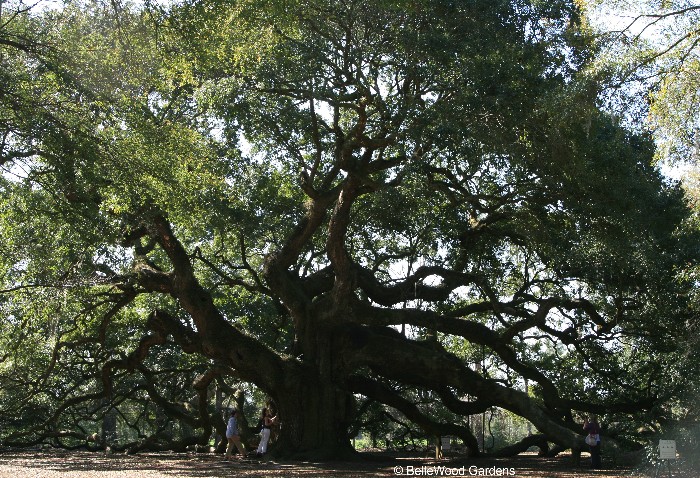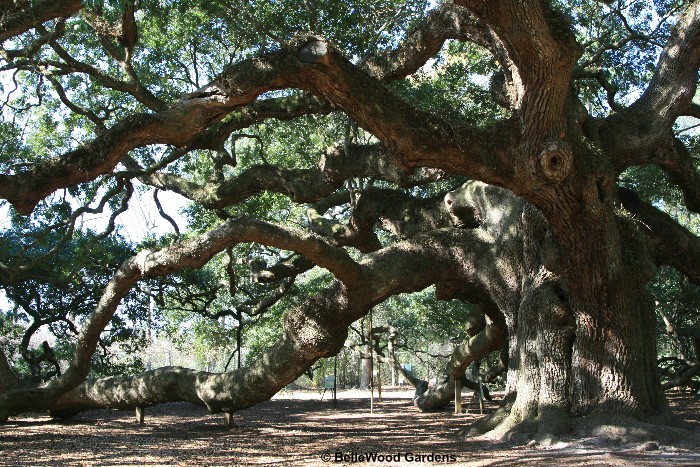
Monday, 9 March 2009
Angel Oak
My lecture for the Charleston Horticultural Society is not until this evening. Patti's busy polishing up her garden for the Tuesday arrival of 40 members of the Camden, South Carolina garden club who are coming for lunch before making garden visits. To keep me out from underfoot and suitably entertained I'm going to be chauffeured around to garden centers and nurseries. Not a bad way for a visiting gardener to pass the time. It is unfortunate that I have to confine myself to purchases small enough to fit into a modest-size overhead compartment on the airplane for my flight home. But there you have it.
So I'm in the car. We're driving around. It's another sunny day. We visit one nursery, another nursery, stop at the local library so I can print my boarding pass for tomorrow's return trip to New Jersey. And somewhere in there, mixed in with a couple more nurseries, we're on Johns Island and I'm suddenly asked, "Do you want to see Angel Oak? It's a really big tree. I think I can find it."
Sure, why not. I'm always game to look at plants. So we drive for a bit, see Angel Oak businesses, and then a sign for Angel Oak Road. We turn down a sandy dirt road, unpaved, the trees to either side festooned with Spanish moss. And arrive at this quiet place with a venerable tree, often said to be 1,400 years old and the largest living thing east of the Rocky Mountains.

Now it is true that Southern live oaks, Quercus virginiana, are long-lived. Trees in excess of 500 years were once common. They're not tall-growing trees, like the redwoods and sequoias of the West Coast. What they might lack in height they more than make up for with spread. Angel Oak is a modest 65 feet high. Its trunk has a circumference of 25 feet 6 inches, and its canopy shades 17,000 square feet. Simply put, it is awe inspiring.

Its major branches are huge, the size of tree trunks themselves. The longest branch is 89 feet long and 11 feet 3 inches thick. Some of these heavy branches rest on the ground, a feature common to the very oldest live oaks.
So how old is it really, truly? Difficult to ascertain. No one has ever scientifically substantiated its age. When a comparison is made with live oak trees for which growth rings have been counted, and comparisons made with proven ages for more slowly growing deciduous oak trees in cooler, more temperate climates suggests an age of 500 years or thereabout to be more likely.

Whatever. This is a sanctified place. It's quiet. There are only a handful of people here today. The City of Charleston, just a dozen miles away, cares for Angel Oak. There are some supports for the drooping branches. Signs ask people not to climb or sit on the tree, but they're ignored. Mystical, magical, named for Martha and Justis Angel who were owners of this property generations ago.
We turn around and leave, down the sandy unpaved road and back to civilization. Did I want to see Angel Oak? Didn't know what it was, but I am so glad I said, "Yes."
Back to March 2009